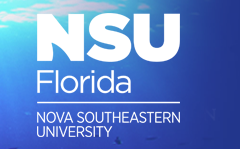-

Phage Hunters: The Discovery of Two Novel Bacteriophages That Infect Gordonia rubripertincta
Sarah Ballarin, Neel Balusa, Melissa Bell, Samia Caballero, Joshua Chan, Maria Farez, Ashley J. Guillen-Tapia, Nashrah Pierre-Louis, Victoria Polishuk, Bhavya Soni, Julie Torruellas Garcia, and Katie E. Crump
Antibiotic resistance is a global healthcare concern because it poses a threat to effectively treating bacterial infections and the need for alternative therapeutics are urgently required. Phage therapy, which uses viruses to treat bacterial infections, is a promising alternative to conventional antibiotics. Phages have also been widely used in the food industry to prevent microbial growth on certain foods and are currently being explored as a method for bioremediation of oil spills and wastewater treatment. Although phages are ubiquitous in nature, many have yet to be discovered. Through the SEA-PHAGES (Science Education Alliance-Phage Hunters Advancing Genomics and Evolutionary Science) program at NSU, our goal was to discover new phages that infect the bacteria Gordonia rubripertincta, a gram positive soil bacteria that can breakdown hydrocarbons and is an opportunistic pathogen in catheter infections. Direct and enriched isolation protocols of soil samples from the South Florida region resulted in the discovery of two novel phages, Genamy16 and NovaSharks, that were able to infect G. rubripertincta. DNA was extracted from each phage to characterize their genomes. Sequencing data revealed that Genamy16 and NovaSharks contain circularly permuted genome ends with a total genome length of 65,574 and 65,274 base pairs, respectively. Both phages belong to the cluster DV. The genomes were annotated using GeneMark, NCBI BLAST, Glimmer, Phamerator, and HHPred. Collectively, our results provide evidence that Genamy16 and NovaSharks are two novel phages that infect G. rubripertincta. These phages will be included in the SEA-PHAGES database and can possibly be used for bioremediation.
Printing is not supported at the primary Gallery Thumbnail page. Please first navigate to a specific Image before printing.


